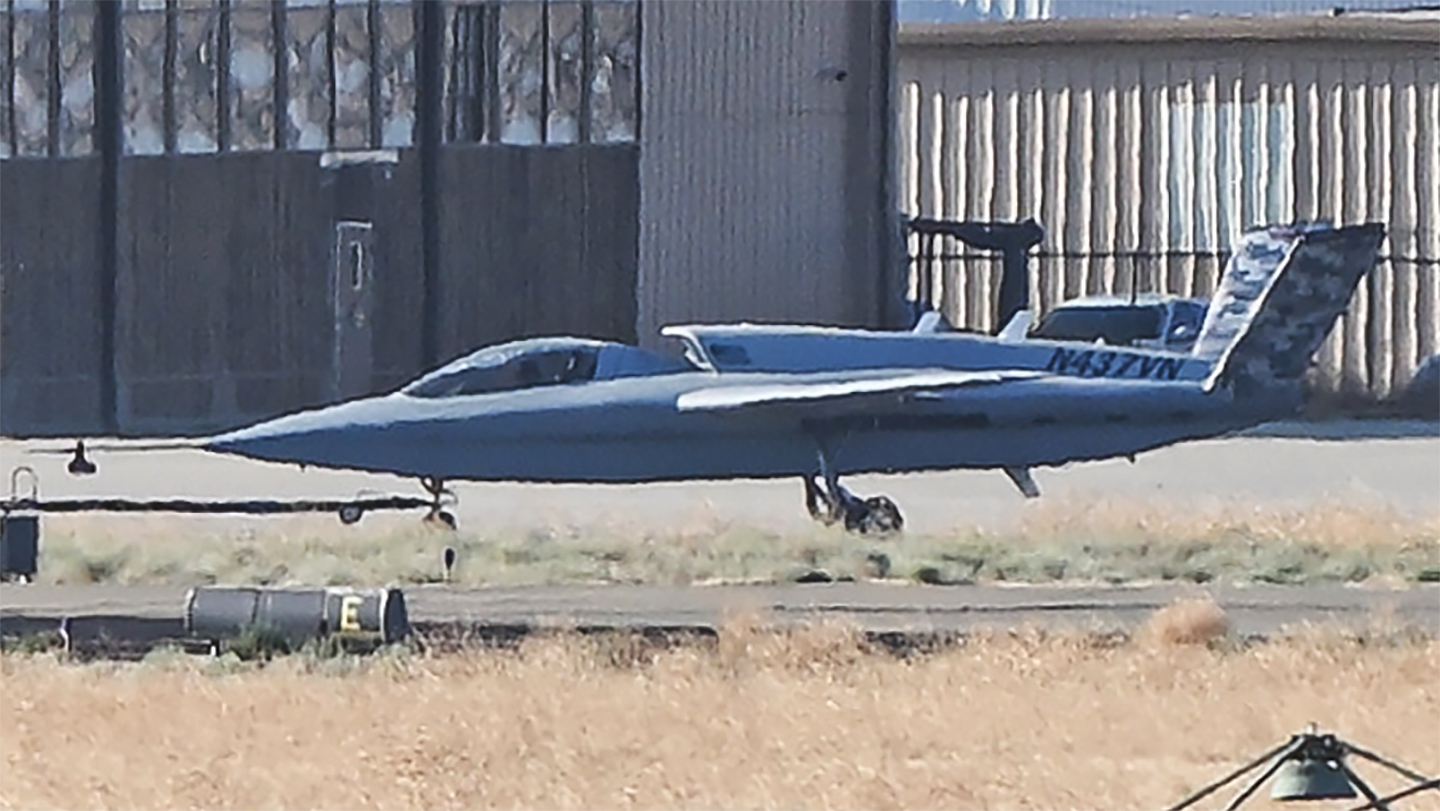The first images of Northrop Grumman’s Model 437, an advanced air combat drone that could potentially fill the requirement for the Air Force’s and/or Navy’s “loyal wingman” Collaborative Combat Aircraft (CCA) programs, as well as those of allies, have hit social media. The relatively small tactical jet looks impressive and is very much in line with the concept renderings we have seen of it, aside from one major detail — it has a cockpit.
Yes, that’s right, the Model 437 prototype features a cockpit for a pilot. While this may seem extremely odd for what is supposed to be an advanced unmanned air combat aircraft, it actually makes some sense and it could give Northrop Grumman (NG) an advantage in the red-hot contest to provide hundreds, if not thousands, of highly autonomous drones to the USAF, as well as the Navy.
The images were taken by aviation photographer @Task_Force23 at Mojave Air And Space Port in California, which is the home of the famed Scaled Composites (SC) ‘bleeding-edge’ aerospace design house that is building the stealthy Model 437 prototype.

When concept art was first unveiled back in 2021, the Model 437 was envisioned as working alongside manned aircraft collaboratively, both fighters and larger combat aircraft, including in an asset protection role for the latter. In our initial report on the concept design, which you should read for full context of this article, its general characteristics were stated as follows:
“With regards to the new Model 437 design, it is also expected to have a range of some 3,000 nautical miles when carrying a load of 4,000 pounds of fuel, and will be able to cruise at around 0.8 Mach, according to Aviation Week. The drone has an internal centerline payload bay that is designed to carry up to 1,000 pounds of stores or other systems, as well. The outlet said that a pair of AIM-120 Advanced Medium-Range Air-to-Air Missiles (AMRAAM) or a side-looking radar imaging sensor were two possible loadouts.“
We don’t know if those design goals have changed, but they generally look copasetic with the aircraft in the pictures from Mojave Air And Space Port.

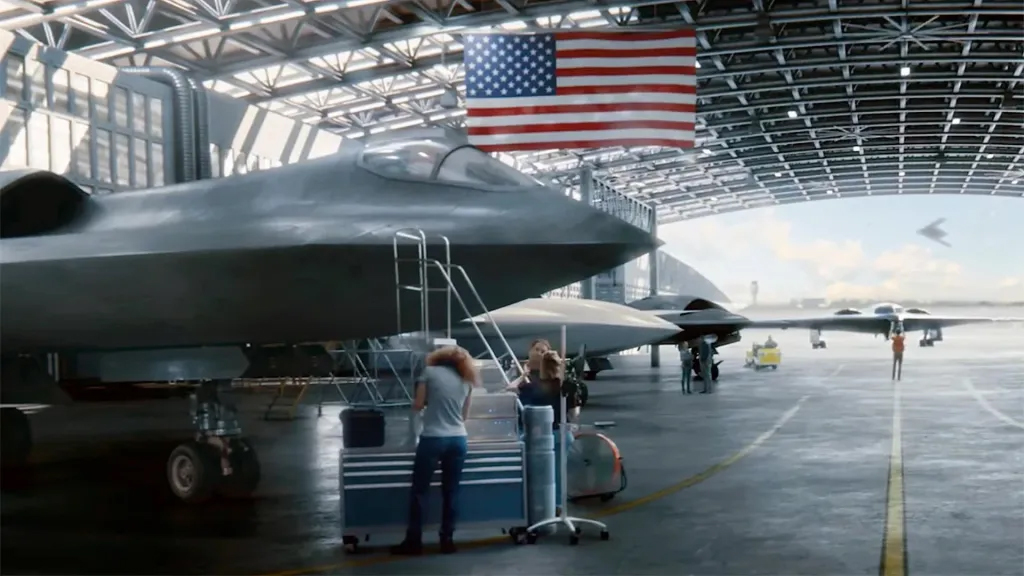
The aircraft, which sports the registry N437VN (certified in January of this year, according to FAA data), features a bowless bubble canopy, a pointed nose with a semi-trapezoidal fuselage, mid-set swept wings, a long dorsal air intake that hugs the rear of the canopy, a distinct chine-line that wraps around the airframe, trailing-link landing gear, and a splayed v-tail adorned in a camouflage pattern. The aircraft also features a round exhaust and a long air data probe, which is customary for initial flight testing and is also visible on its nose. Once again, it looks very much like the Model 437 renderings, just with a bubble canopy. Overall, paired with its small size, it has a very futuristic, almost movie-prop-like look.

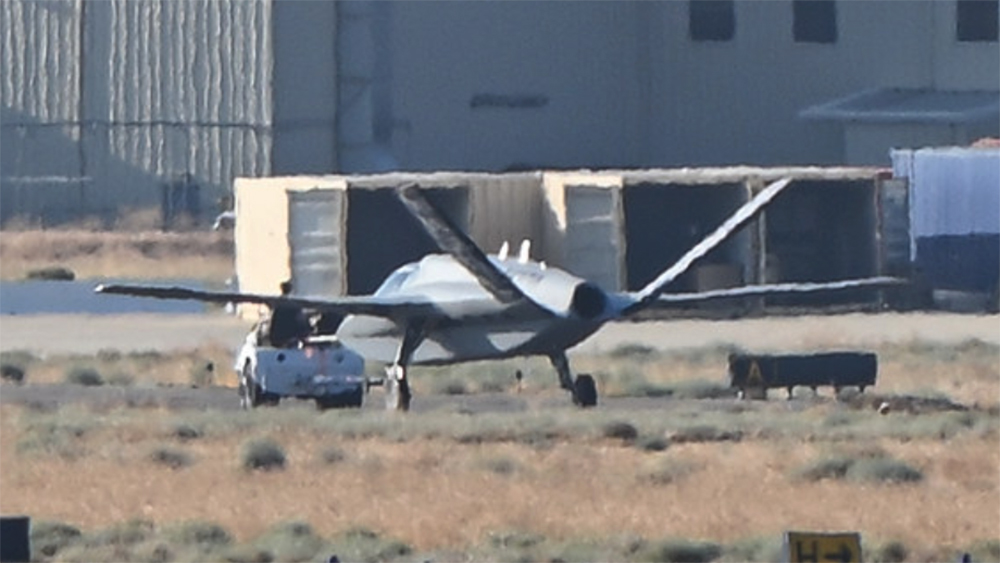
As we laid out in our initial report on the Model 437 concept art, this design clearly evolved from Scaled Composites’ Model 401 demonstrators, which themselves evolved, at least inspirationally, from the company’s ARES demonstrator. The Model 401 is also now touted as having the potential to be offered alongside the Model 437 in an unmanned production configuration.
The twin Model 401 demonstrator aircraft have been flying constantly for years now executing various testing duties, some of which are likely concerning the future of manned-unmanned teaming in tactical aviation. As such, by default, a ton of risk for the Model 437 has already been offset by the existence of the Model 401s and their testing operations.
But why build the Model 437 prototype, supposedly a highly autonomous drone, with a cockpit?
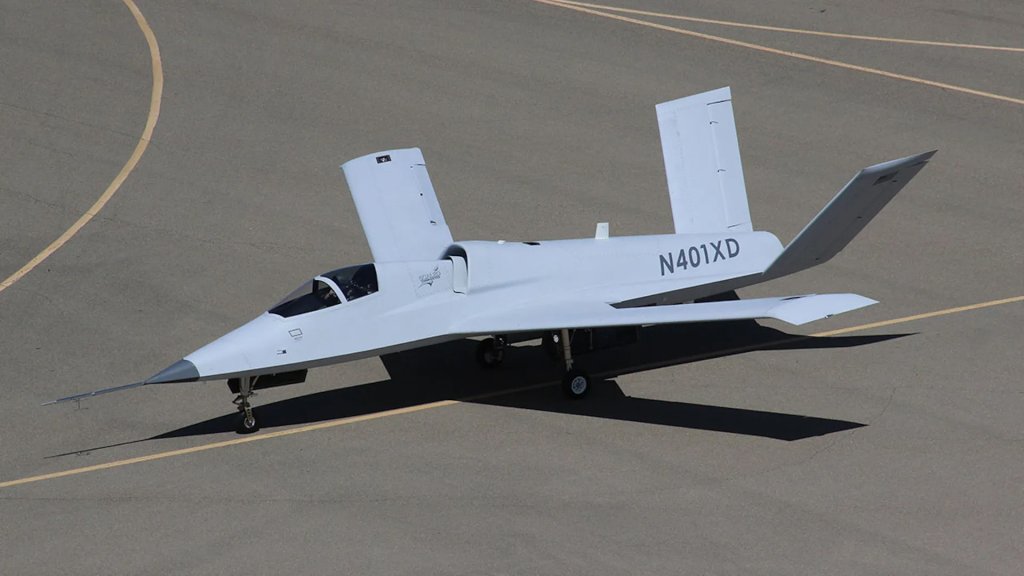
Here are the possibilities and our overarching analysis, which is subject to change as we learn more about the state of the program:
Having this initial prototype piloted drastically increases the potential for rapid flight test and development of the Model 437 airframe and concept. The advantages include just accessing airspace pretty much anywhere its owners and potential customers want it to go.
Unmanned aircraft are still quite restricted as to where and how they can operate. A pilot totally changes this massive bottleneck and means the aircraft can be flown wherever it needs to go, to participate in any developmental flights or training exercises, no matter how complex. It can do this unburdened by typical drone airspace restrictions and the need for chase aircraft that can be required in certain situations. Just ferrying to a different location while manned, so it can access airspace where it can fly as if it were an unmanned aircraft, is a giant advantage.
For many tests, having a human onboard can accelerate the speed at which they can be accomplished. At its most basic, initial primary flight testing of the airframe will go far faster with a pilot at the controls. Overall, more risks can be taken when executing autonomous activities with a pilot there to take over and act as a safety backstop if needed. The X-62 is being used in this exact manner today and it has been highly successful in doing so. But that is an adapted F-16D that is running autonomy agents (software), not a near-production representative CCA-like airframe. This is a huge difference, especially considering one is actually looking to be bought in large quantities, while the other is a one-off test surrogate.

If the Model 437 prototype we are seeing is a dedicated piloted configuration, it’s very possible that NG and SC have another Model 437 prototype airframe in the unmanned configuration, or at least one under construction. Then there is the possibility that the aircraft we see is truly optionally manned.
When it comes to optionally manned flying machines, it would be very hard to argue that few companies have more experience with this concept than Scaled Composites. While the optionally manned Firebird surveillance aircraft never realized enough customer support to be put into production, it leveraged many years of know-how Scaled Composites had in the optionally manned space and condensed it into a streamlined, flexible package. If indeed the Model 437 prototype aircraft is optionally manned, or can be converted to unmanned configuration after primary flight testing, you can bet that parts of the Firebird’s DNA are woven into its design, and especially its onboard control and communications architecture.
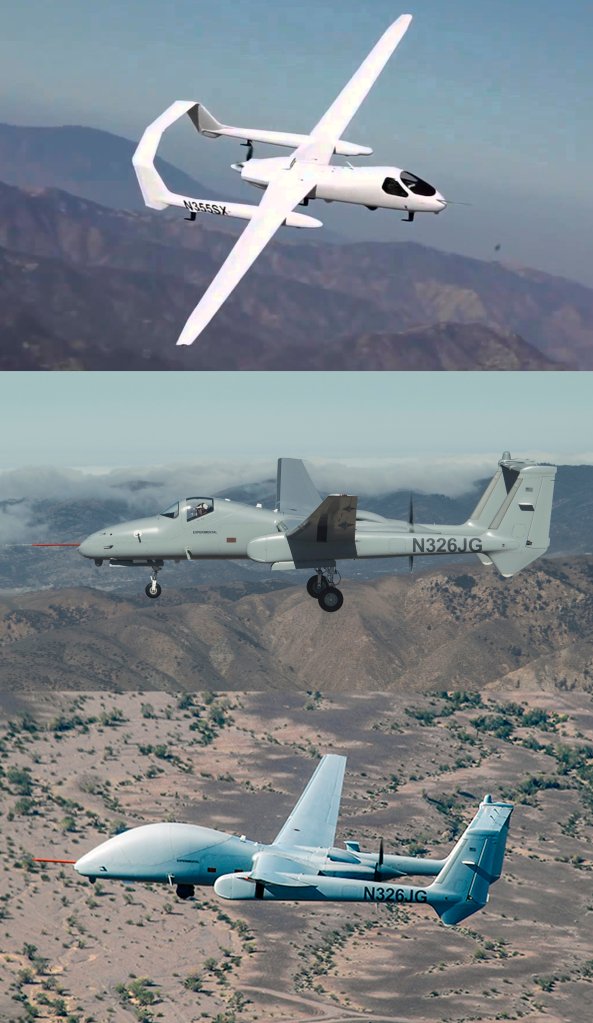
That brings us to the question of whether the Model 437 might be intended to be optionally manned operationally, not just for testing, if it is at all?
The answer to that is probably no, but we really cannot say for certain. It’s worth remembering that NG says a production variant of the manned Model 401 is envisioned as being optionally manned, or at least be available in an unmanned variant that could work in conjunction with the Model 437 or on its own.
An optionally manned variant with the cockpit canopy being replaced by a fairing that can enclose satellite communications systems, avionics, and possibly additional sensors, would fit with SC’s past offerings. But still, we just don’t know if this is the intention. Getting in on the USAF and Navy CCA tenders is the real prize to be won here.
As for a strictly manned variant of this aircraft? That seems unlikely, but it is interesting to ponder. A relatively cheap, subsonic, light tactical jet with low observable characteristics, great endurance, and near total commonality with its unmanned counterpart is certainly an intriguing idea, and it would be remarkably similar to its ARES forebear, but we know of no formal requirement for such an aircraft. It could see some interest in the export market though, especially if great economies of scale thanks to its unmanned counterpart were to exist and the cost was able to be driven way down.
At this time we have no idea if the Model 437 prototype has flown before, either without being noticed from Mojave Air And Space Port or from a clandestine location, but considering it is being towed around at a public airfield in broad daylight, the latter seems less plausible. One would think NG and SC would make a major announcement of a first flight, but we just don’t know how the company intends to treat the aircraft in terms of program sensitivity at this time. We also don’t know if any contract is directly supporting this aircraft’s development or if it remains an entirely internally funded endeavor.
It’s worth noting that the Navy remains a wildcard in all of this. Northrop Grumman famously withdrew from the USAF’s high-profile manned Next Generation Air Dominance (NGAD) fighter tender to focus on the Navy’s similar initiative. There is a fair chance this aircraft aims to fit the drone component of that initiative, at least in a carrier-capable, navalized form.
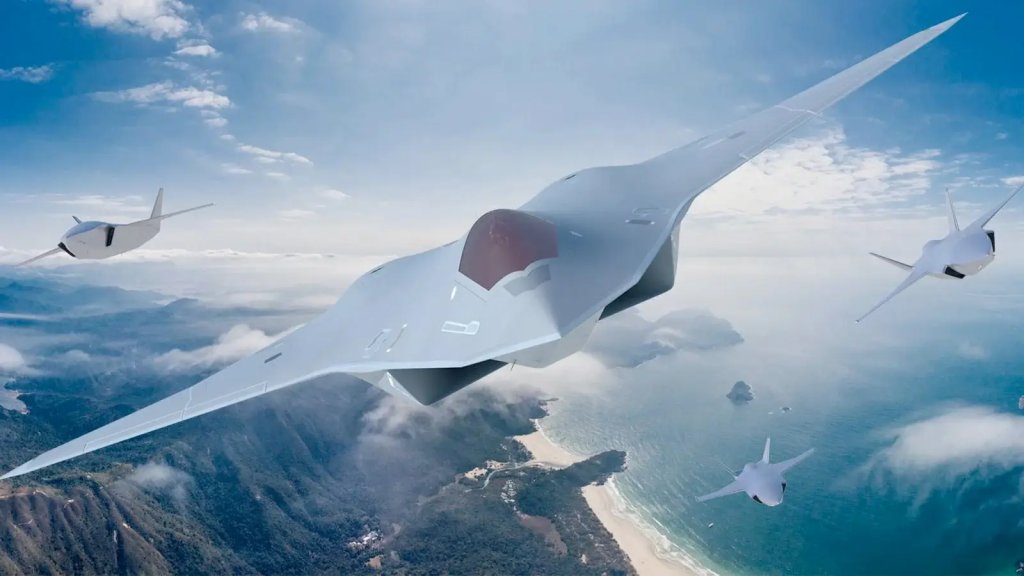
With CCA increment two on the horizon for the USAF, which could be massive in size, and the Navy still perusing its own CCA requirements, the emergence of this aircraft at this time makes sense. This is especially true as General Atomics and Anduril, who are competing for the first CCA production contract, are gaining steam with their very different CCA designs. Meanwhile, Boeing and Kratos are also major contenders and Lockheed Martin is certainly deep in the same mix.
The bottom line here is that the Model 437 has accommodations for a human pilot is a major twist — one that could potentially give NG a unique advantage as the future of highly autonomous unmanned tactical jets fast approaches.
We have reached out to Northrop Grumman and Scaled Composites for comment. We will report back if we here anything of substance from them.
Contact the author: tyler@twz.com
